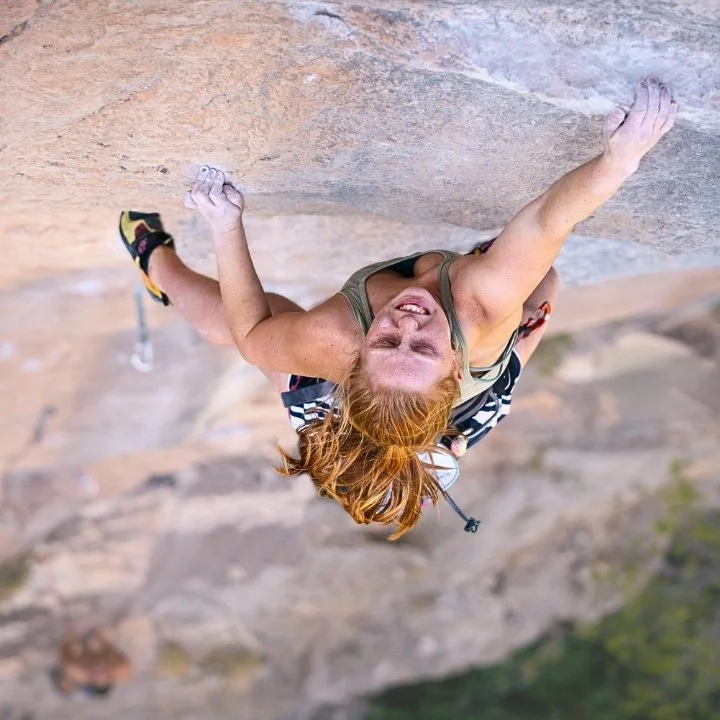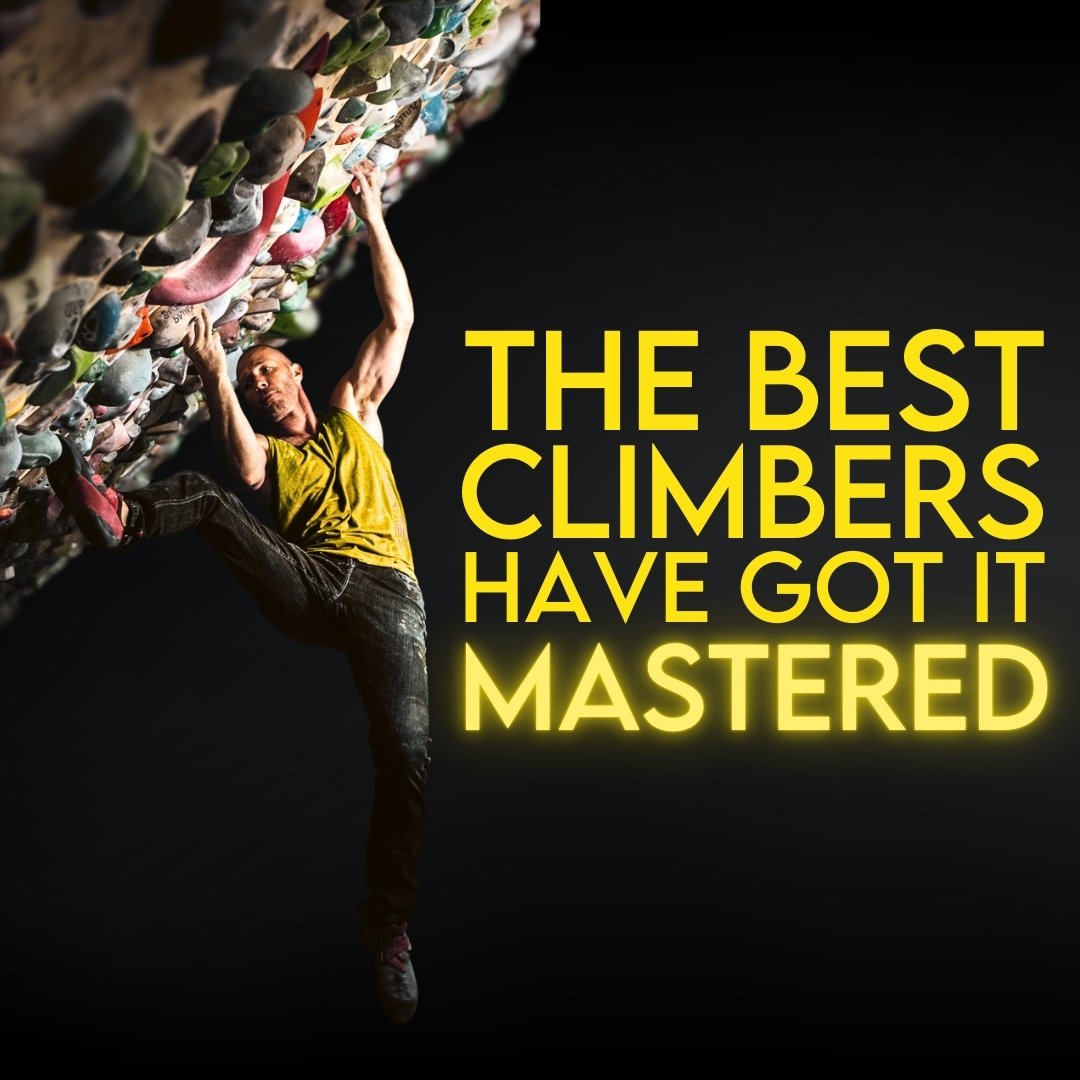The Two Biggest Barriers to Sending Hard Climbs
Have you ever tried a hard climb or a hard move and immediately said, “I just need to get stronger,” but then a few attempts later you just do the thing?
Did you somehow magically get stronger in those few attempts?
No, of course not.
A lot of things could have happened in those few attempts, but what didn’t happen is you gaining strength.
We should know better than to use, “I just need to get stronger,” as an excuse to quit.
But it keeps happening.
I mean, look, you didn’t choose to put time into this climb because you thought you weren’t strong enough. You didn’t choose to put time into this climb to be a passive participant.
However, I often hear the same two refrains right before people walk away from their projects:
“I think I just need to get stronger.”
OR
“I’ll just keep at it. It’ll come together.”
We’re going to discuss why those are usually the wrong responses, and I’ll give you a simple, better response to make sure you have a fighting chance.
Let’s get into it.
Getting stronger takes a lot of time.
Sure, you can make some quick initial gains when you start that journey, but after that, it will often take months or even years of work to make appreciable strength gains that will impact your climbing. You aren’t going to do it with a single session in the gym, and it’s not going to happen before next weekend. So unless you’re just trying something that is obviously a distant future project…
Saying “I think I just need to get stronger,” is really saying, “I think I need to wait for months or years before I try this again.” It’s also saying, “Strength is the one aspect of this move that I don’t have enough of.”
It’s saying that you’ve nailed the correct beta, the body positions, the techniques used, the mindset and belief, and more. All of it except for the strength component.
Unlikely. And the other response:
Waiting for a climb to just “come together” assumes you have no control over the process.
There are things we can’t control: conditions, if there is a crowd of people on your project, etc. – pretty much everything other than your effort, your decisions, your response to change, and your intention.
But the process? You have nearly 100% control over that. A climb isn’t just going to come together on its own. You’re going to shape that in some way just by trying it, so you might as well bring real intention to that process. Because the truth is, having worked with thousands of climbers over the past 15 years, I’ve seen a lot of people shape their process to take way longer than it should have. They do that by not embracing their own intention on every single attempt.
Trying something from the ground again with the same beta or same approach and just hoping that something magical will happen – and then complaining that you aren’t strong enough when you still fall at the same move – is not the way.
Not ever.
Immediately blaming your failure on a quality that will likely take years to develop – or worse, one that removes you from the equation entirely – is simply a convenient place to hide from reality.
We, as humans, are actually pretty good at not overreaching our abilities – we’re very good at underreaching our abilities. The point is, if you chose this climb to put effort into, it’s likely that you chose it because you’re capable of it. It’s possible for you. And possibility is alluring. Because it requires us to be just that little bit better.
Which is what we all want: to be a little better.
And there are absolutely ways that we can be a little better right then and there. There are nearly always new tactical approaches that can open doors. On nearly every move of every rock climb, there are other options to explore, not to mention all of the moves leading to the move you’re falling at – or your decisions leading to getting on the climb that day to begin with.
Let’s say it’s a single move.
Failing to do a move is often the precursor to the “I just need to get stronger,” response. One of our coaches, Nate Drolet, came up with a solution:
The 7 Try Rule
Give the move 7 honest efforts. If you make zero progress, then maybe you’re right. Maybe you need to get stronger. But if you make any progress, no matter how small – you create momentum where you couldn’t before, you touch the next hold for the first time, you latch it for a split second longer, or even just feel like you understand it better – the count starts over.
Most people never make it to 7 tries. Most people do the move before they get anywhere close.
Let’s say it’s a route or a boulder.
You’ve done the moves on it but just can’t seem to put it together.
Look at the tactics.
When I’ve consulted with people who are failing on their projects, it turns out, 100% of the time, that they haven’t explored all of the different links they should do. Their response is almost always that they didn’t think it was necessary, that it would just work itself out. It only works that way if you’re nowhere near your upper limits.
Instead, have you done all of the obvious sections, including full cruxes and the transitions in and out of them? Have you linked from the ground to the crux and from the crux to the top? From the ground through the crux and from below the crux to the top? Is there the opportunity to do a link to the top from lower than you already have? Even if it’s doing the boulder from one move in, why not try it?
If you’re just hoping that you’ll start from the ground and “get lucky” this time, that’s the same as saying, “It’ll work itself out.”
Hope is not a strategy.
You have to be intentional every step of the way.
So next time you think to yourself, “I just need to be stronger,” stop yourself and employ the 7 Try Rule.
And next time your response is, “It’ll work itself out,” interrogate the tactics you have and haven’t explored yet.
Try something different. Don’t wait to get lucky.
EXPLORE FURTHER
You might enjoy these related articles, episodes, and other resources:
Adapt: Lessons Learned Climbing 100 5.13’s
The Projecting Strategy Most Climbers Never Learn
Climb Your Project Sooner | The Art of Execution
The Most Important Skill for Climbing 5.13
SUPPORT + CONNECT
Help us keep the show sponsor-free when you join our Patreon Community for as little as $3.
Get two or more bonus episodes every month on Patreon, Spotify, or Apple.
Subscribe to THE CURRENT and get a monthly exploration of how we can all become better climbers.




















Switching back and forth between sport climbing and bouldering can be difficult…